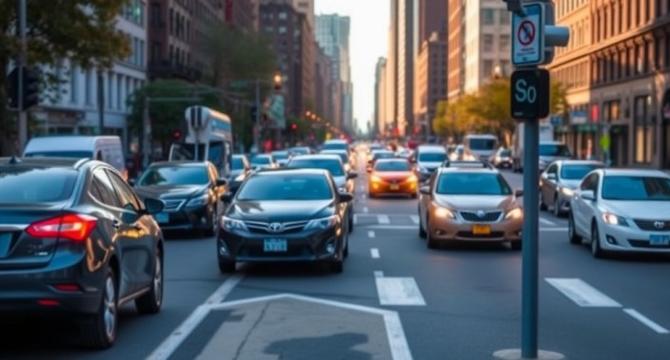Bioengineer
1M
239

Image Credit: Bioengineer
Study Reveals NYC Speed Cameras Take Six Months to Influence Driver Behavior, Impacts Vary by Neighborhood
- A recent study by NYU Tandon School of Engineering reveals the significant impact of New York City's automated speed camera program on reducing traffic crashes by 14% and speeding violations by 75% over time.
- The research emphasizes the importance of automated enforcement mechanisms in preventing tragic accidents in a densely populated city like NYC, where every safety improvement in traffic regulations can save lives.
- The study, spanning from 2019 to 2021, shows that the impact of speed cameras is most pronounced within the first six months of installation, influencing driver behavior.
- By closely monitoring individual camera performance, researchers identified geographical and temporal patterns, guiding future placements for maximum safety benefits.
- The longitudinal approach of the study revealed that most cameras effectively reduced violations and prompted drivers to adjust speeds within six months, indicating a fundamental change in compliance and behavior.
- Research identified four performance patterns across NYC, showcasing how some cameras consistently reduced violations, while others adapted over time, even during challenges like the COVID-19 pandemic.
- The 'time-lag effect' in driver compliance highlighted the gradual behavioral changes post-installation, presenting implications for urban traffic management and policy implementation.
- The pioneering use of Survival Analysis with Random Effects by the C2SMARTER team provided a dynamic overview of traffic safety effects, offering insights for faster safety interventions and reduced fatalities.
- The research recommends a data-driven, targeted approach for urban traffic management, advocating for evidence-based solutions tailored to specific locations and circumstances for enhanced safety.
- The study advocates for strategic application of data analytics and statistical methodologies to save lives on urban roadways, emphasizing the ripple effects of even minor improvements in compliance and speed regulation.
- Overall, the research on NYC's speed camera program not only offers a technological solution but also crucial insights for transportation safety advancements, highlighting the need for informed urban planning to protect communities and improve residents' quality of life.
Read Full Article
14 Likes
For uninterrupted reading, download the app